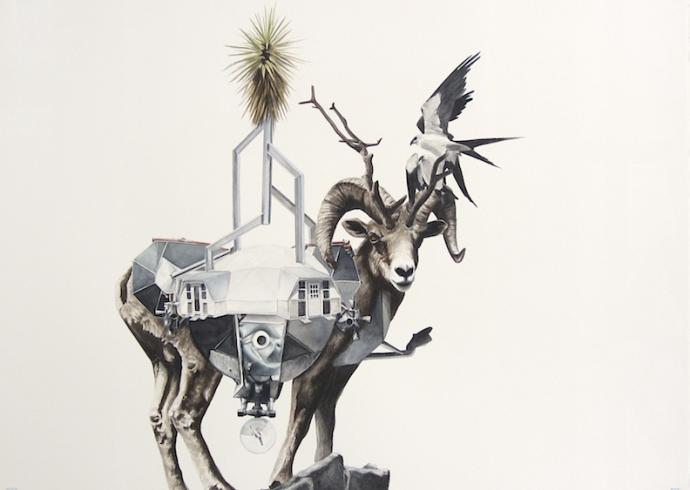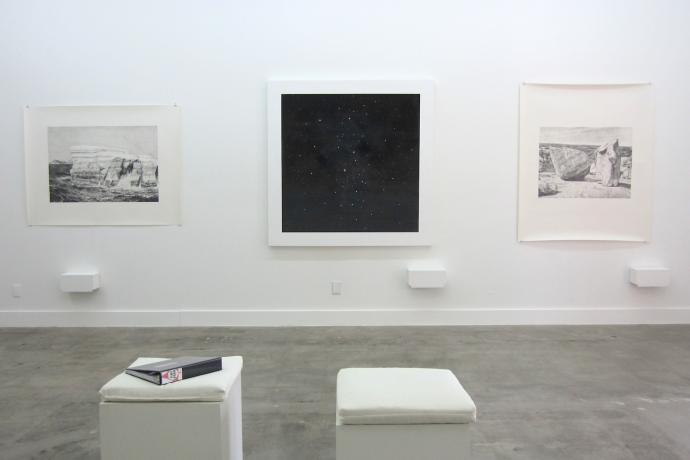from pastelegram.org, June 2011 – April 2014
Anthony W. Garza
Tiny Park’s recent show of Anthony Garza’s work got me thinking about a collection of jpegs on my computer that I’ve dubbed “Serious Animals.” They’re all things I’ve found via the internet, sometimes through serious photography blogs but mostly from random image tumblrs. Usually in the form of dramatic and theatrical portraits, “Serious Animal” pictures manage to be vaguely anthropomorphic yet also wildly nonhuman at the same time. This is what keeps me looking for them. It’s as if the animals appear on their own terms, though we still seem to have something in common.

Garza’s watercolors of animal-object hybrids tap into a similar understanding, where members of the animal world live in a tentative and shifting relation to human experience and human society. While implicated within the human realm, the animals also exist definitively apart from it. Of the three watercolors in the show, the most effective was Southern Moon Ram. Steely-eyed and serious, a bighorn sheep stares out, birds flapping in his tree-branch horns, his mid-section an architectural mélange of a geodesic dome and other semi-lunar forms. The architectural construction is busy and mechanical and contrasts distinctly with the ram’s placid and removed gaze. Without this contrast the painting would have fallen flat and become yet another ironic appropriation of the animal kingdom. With it, however, comes a tension between the self-assurance and presence of the animal and its collision with human constructions.
It’s this tension that carries Garza’s watercolors. It’s also this tension that is absent from the other works on display: pencil drawings of branches, rock formations and horns as well as two paintings of starscapes. Quieter and more contemplative than the watercolors, they’re reminiscent of Vija Celmins’ process-oriented drawings. Like a Celmins, they allow you to revel in the representational force of a well-made image. It’s a pleasure to stand in front of them and trace the modeling of rocks, surfaces and space. Unlike a Celmins, and unlike the watercolors, however, the rock and branch drawings have neither a clear relationship to process nor the powerful dynamism between the human and natural worlds. Their quietness and skill make them successful drawings but the affect isn’t quite there.
